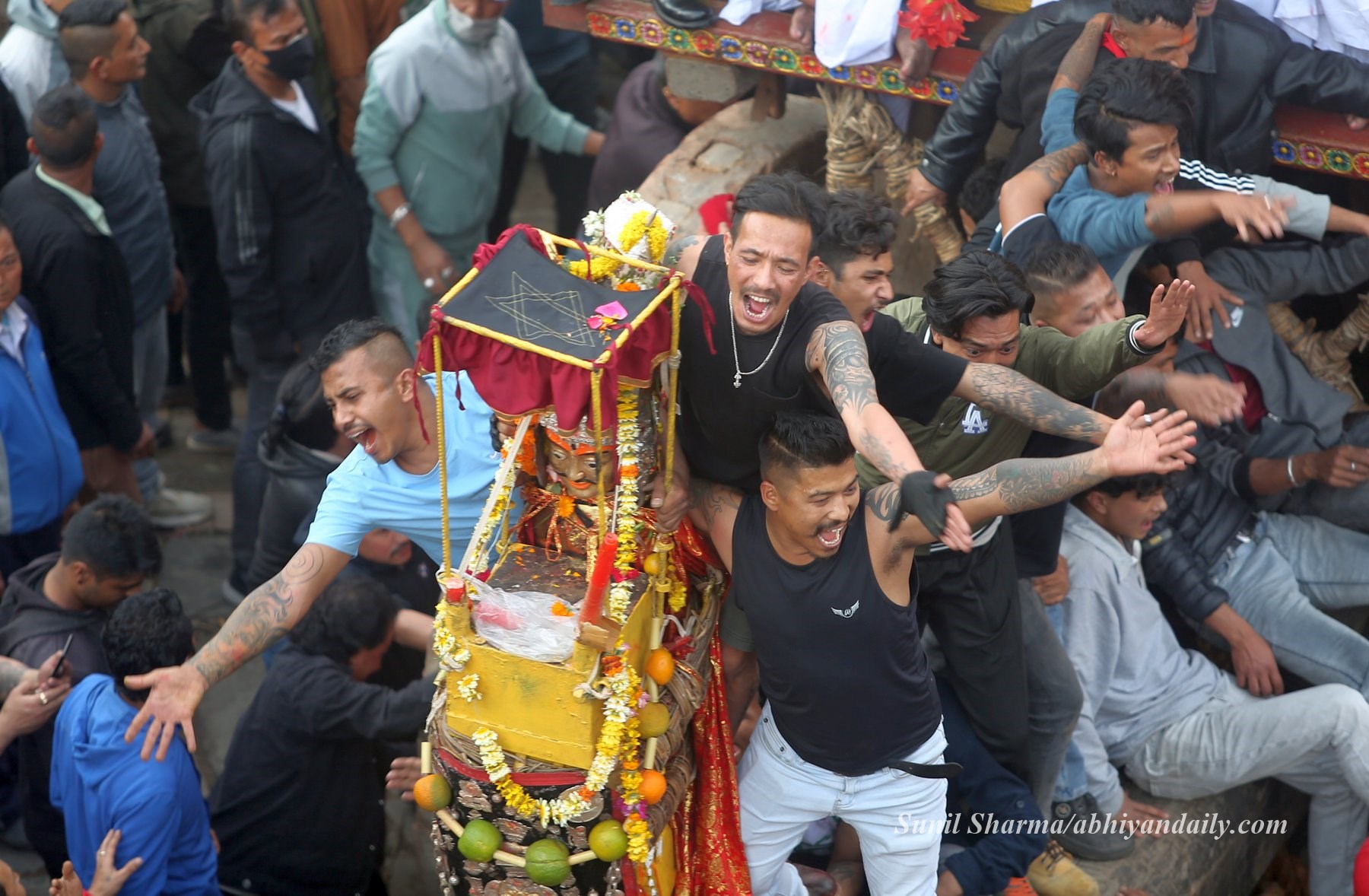Bhaktapur’s iconic Biska Jatra, an eight-day and nine-night-long cultural spectacle, commenced on Thursday, April 10, drawing crowds from across the country and abroad.
Celebrated with vibrant energy and deep-rooted tradition, Biska Jatra is one of Nepal’s most significant and visually striking festivals. The centerpiece of the event is the dramatic chariot procession of Bhairabnath, where a towering three-storey wooden chariot is pulled by ropes from opposing sides in front of the famed Nyatapola Temple at Taumadhi Square. This symbolic tug-of-war between rival groups energizes the square with intensity and excitement.

The origins of Biska Jatra trace back to ancient legend. The name “Biska” is believed to derive from the Nepal Bhasa term “Vi-Sika”—with “Vi” meaning venomous serpents and “Sika” meaning slain. According to folklore, the festival celebrates the killing of two mythical serpents, an act believed to have paved the way for the expansion of human settlements in the region. Over time, “Vi-Sika” evolved linguistically into “Biska”.
The festival not only holds immense cultural and historical significance but also provides a major boost to Bhaktapur’s economy. Hotels and restaurants overflow with visitors, as both domestic and international tourists flock to experience the vibrant atmosphere. Some foreign visitors plan their trips around the festival, with this year seeing the arrival of several groups of Chinese tourists and photographers eager to witness and document the spectacle, along with other New Year celebrations in Thimi and Bode.

One of the most anticipated moments of the festival takes place in Lyosingkhel, where a massive ceremonial wooden pole is erected on the final day of the Nepali calendar year—Saturday, April 13—and then ceremonially brought down on New Year’s Day, Baisakh 1.
Our photojournalist Sunil Sharma captures the vibrant spirit of the festival in these images taken on Thursday.
















you need to login before leave a comment
Write a Comment
Comments
No comments yet.